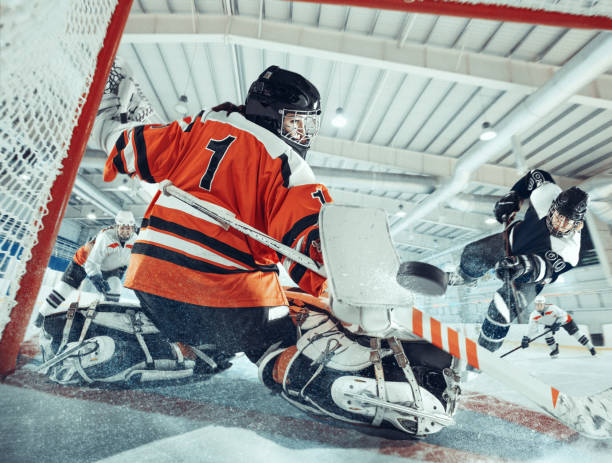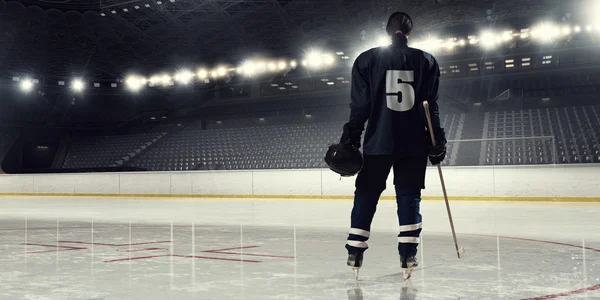As the new hockey season begins, many girls and their parents will begin the process of looking at hockey academies for next fall. We went through this process last year with the schools most folks would consider the top three girls hockey academies in the U.S. Here are some of the key learnings from our experience and how our daughter made her decision on which one was right for her.
This post is less about the specific hockey academy my daughter chose to attend this year, and more about the various factors that went into her decision that anyone considering going to a female hockey academy should consider.
In addition, this isn’t meant as a critique of any program – each program has their pros and cons – which is why none of the programs are specifically mentioned. And while there were significant differences in the “candidate experience” for how my daughter was treated by each school during the process, that topic won’t be covered here.

Context: Factors schools look at to be interested in your player
Just like in the work world, recruiting is a two-way street. One of the first items to consider is how good is your player? Being a very good player is a necessary but not sufficient requirement for admission and selection. In addition schools also look at the following:
- Grades and academic recommendations
- Year/grade of entry into the program
- Personality fit with the program
- Long term player goals
The application process and essay questions helps schools with assessing many of these factors.
Each player’s journey is unique
Each application is unique because there are a number of attributes that are distinct for the school and the student-athlete. As an example, my daughter was already a sophomore when applying to these schools, and therefore the number of openings for a player who would only attend 2 (or possibly 3) years at the school did indeed impact her consideration. Specifically, the number of spots open for her position (defense) and her age varied by program, since the school needs to have the right balance of ages across both the 16U and 19Uteams. They can’t have 10 D with the same graduation year.
Priorities for Parents & Players:
Here are the 8 factors that we considered for evaluating the three hockey academies (in priority order):
- Coaching
- Academics
- Team Culture
- Hockey Facilities
- Boarding facilities
- Location (distance from home and amenities)
- Cost
- Recruiting visibility
All the school players get great exposure to college coaches. And while many players play college hockey, not all of them play DI – so it is no guarantee that getting into a hockey academy will mean a DI scholarship or playing in the Ivy League.
Breaking Down the Eight Factors in Evaluating Hockey Academies
1. Coaching
The most important factor was clearly player development. Where did we think our daughter would be the best she could be? And since coaches and skill development are critical to her success, over the two or three years should would be attending, we did back-channel references on all the coaches she would likely be interacting with from current parents and alumni players from each program.
A few questions that you should ask the coaches:
a) Will there be a coach who knows how to coach my player’s specific position? This is even more important for goaltenders.
b) What is the coach’s philosophy about ice time during the season and playoffs? How do you trade off winning vs development?
c) If the player is not on the top line, will they still develop by getting game ice time and receiving productive feedback from the coaching staff (not just being criticized for errors)?
There were indeed significant differences for these answers across programs.

2. Academics
Getting a solid education while playing hockey is obviously quite important. And while all the hockey academies send players to top schools, it seemed that some were better than others at actually preparing students for the next level in their education. I have no doubt most girls will rise to the occasion when they get to college, but we definitely saw big variation in our perception on how well our daughter would be prepared for university level courses.
Note: If academics were the #1 priority for a player, they should probably consider a New England prep school.
3. Team Culture
At most of the hockey academies, players come from all over the country and were typically the best players on their team prior to arrival. As a result, their attitude towards their teammates and the camaraderie seemed to differ across schools. Some were more humble and accessible, while at others, a sense of superiority, entitlement and cliques were more obvious. If you are going to spend 24 hours a day with your teammates, you will want to make sure you really like spending time with them.

4. Hockey Facilities
Candidly, some of the hockey and training infrastructure available at one of the schools is significantly better than the others. Having 24 hour access to ice time is definitely an advantage for some academies. As well, off-ice training facilities and rehab resources can make a difference. The key is knowing what some of the trade-offs are between programs and which are “must-haves” vs. “nice-to-haves”. It is similar to women’s college teams, some have pro-level facilities, while other top name programs aren’t as lavish, but still consistently are Top 10 teams on the ice.
5. Boarding Facilities
Factors like room size, number of roommates, access to kitchens and food can make a difference to the player. Four people to room is different than two to a room. Meals are obviously a big deal and getting the high quality meals at the right time of day is very important. Other small amenities can matter too, for example, my daughter likes to bake – so that was one of the factors that was a positive for her in her choice.
6. Location
Depending on where you live and how independent your player is, location can matter. Distance from home and the amenities surrounding the school may impact your experience. For us, we would be travelling from the west coast, so it was less important from a parent point of view since all of them were far from home.
7. Cost
Obviously this varies by school and your specific needs. This would include tuition, boarding, hockey and travel costs. Not just the player costs, but also the cost for the parents to travel to games and to the school. There are differences between schools, but you would need to assess the difference in value to you individually for your specific situation.
8. Recruiting Visibility
While this is very important, the reality is that all the U.S. hockey academies are highly scouted and have the top coaches watching many of their games in-person and online. If your player is good enough for their school, they will get seen. Even more importantly, your player’s coaches will have existing relationships with almost all DI and top DIII schools. This is a major asset the academies provide and will certainly give your player access that many other club programs probably don’t have.
Summary
As mentioned above, every player’s path is different, but these were the key themes and factors that drove our daughters decision. If you had a different experience, additional thoughts or questions. Feel free to reach out on social media or here to share your experience.
